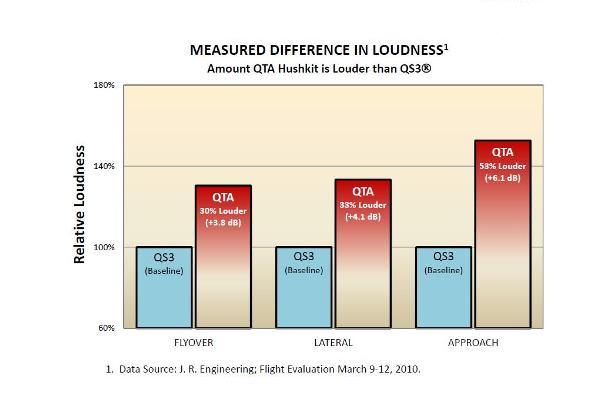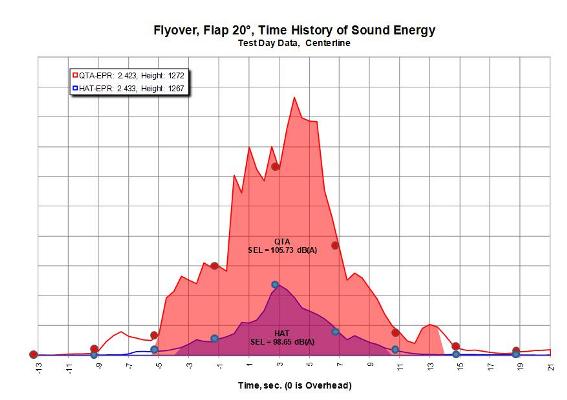AIRPORT UPDATES
REVIEW THE RESTRICTIONS

Hubbard QS3 Hushkit Beats QTA in Back-to-Back Takeoff Tests for Noise Footprint
View below two charts illustrating the performance differences between the QS3 and QTA hushkits.
The first diagram illustrates the differences between the 90 dB footprints of a QS3-equipped Gulfstream GII and a QTA-equipped Gulfstream GII, both departing from Teterboro Airport, NJ.
The SEL chart (which represents the time-integrated, A-weighted sound level or Sound Exposure Level), illustrates the QS3-kitted GII will penetrate 1.8 square miles of surface area whereas the QTA GII impacts 4.2 square miles with a minimum of 90 dB jet noise. In other words, the QS3 system impacts 57% less area than that of a QTA-hushkitted GII.
The datum is based upon the FAA INM (v6.2a) database and corrected for measured data from the noise certification tests and actual recordings of two hushkitted Gulfstream GII aircraft tested by JR Engineering of Everett, WA. Though the absolute levels of noise may vary with airport temperature and altitude, the relative difference in noise levels between the two hushkits remains consistent and the effects can be applied to a variety of airports.
The second chart details the difference in loudness, as meaured in accordance with the FAA profiles for establishing Flyover, Lateral and Approach noise certification values.
Prepared by JR Engineering, an independent engineering consulting firm.
SEL- 90 dB(A) Contour




